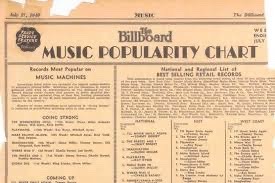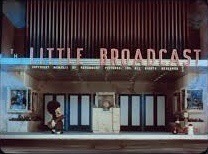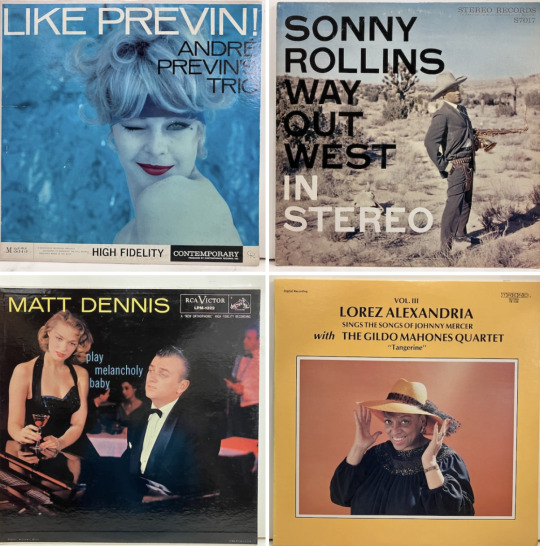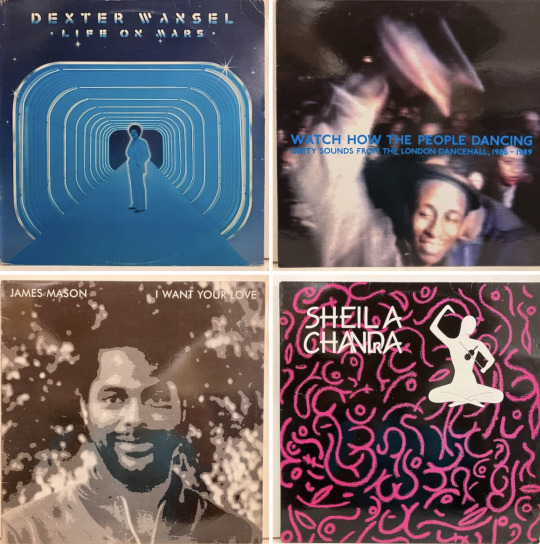#joe venuti
Explore tagged Tumblr posts
Text
The Electrifying Legacy of Stuff Smith: Jazz Violin's Unconventional Virtuoso
Introduction: Jazz, with its rich and diverse history, has seen countless instrumentalists pushing the boundaries of their respective instruments, but few have done so with the sheer audacity and innovation of Stuff Smith. A pioneering jazz violinist, Smith broke away from traditional classical influences to carve out a unique place in jazz history. His contributions to the genre, particularly…
#Alphonse Trent#Black Violin#Charlie Parker#Dizzy Gillespie#Have Violin Will Swing#Jazz History#Jazz Violinists#Jean-Luc Ponty#Joe Venuti#Leroy Jenkins#Louis Armstrong#Regina Carter#Stéphane Grappelli#Stuff Smith#Stuff Smith and His Onyx Club Boys
6 notes
·
View notes
Video
youtube
Joe Venuti - Sensation - New York, 27.09.1928
Joe Venuti's Blue Four With Vocal Refrain Clarinet - Jimmy Dorsey; Drums - Paul Graselli; Guitar - Eddie Lang; Leader - Joe Venuti; Piano - Rube Bloom; Saxophone [Bariton] - Jimmy Dorsey; Violin - Joe Venuti; Vocals - Rube Bloom; New York, 27 September, 1928
3 notes
·
View notes
Text
"Kay Starr: La Reina del Jazz y Blues de los años 40 y 50"

View On WordPress
#Éxitos musicales#blues#Canciones Navidad#Capitol Records#jazz#Joe Venuti#Kay Starr#Música Swing Occidental#mujeres en la música#radio#RCA Victor Records#Rock and Roll
0 notes
Text
The #1 song is "Stop, Look and Listen" by Joe Venuti.

Billboard published the first music hit parade on January 4, 1936 #OnThisDay
18 notes
·
View notes
Text

May 8, 2025
Today, we’re thinking about fighting Nazis (in the past and present), NEA cuts, and comics as journalism!
On Lit Hub dot com:
Michele Filgate on navigating loss alongside her father: “Is this my family’s thing? The need to pin memories down, preserve them in a drawer, put a frame around them?” | Lit Hub Memoir
“Rivers are the veins of our mother, the earth; they are the visual mapping of a watery network.” Leanne Betasamosake Simpson on rivers as teachers. | Lit Hub Nature
Shelly Sanders excavates the women snipers of the Red Army, who were silenced by the country they fought to protect. | Lit Hub History
Mo Ogrodnik on fusing research and filmmaking techniques to write a novel that depicts violence against women from multiple perspectives. | Lit Hub Craft
“We need indie presses and literary magazines for a thriving literary ecosystem.” Maris Kreizman wants to know what can be done in the face of Trump’s devastating NEA cuts. | Lit Hub Politics
“In this artful and sad novel, forbearance is courage.” 5 book reviews you need to read this week. | Book Marks
Becky Aikman on the “Atta-Girls,” the women pilots who chased adventure during World War II. | Lit Hub History
Natasha Lester recommends globe-spanning books on World War II by Ariel Lawhon, Emma Pei Yin, Anne Sebba, and more! | Lit Hub Reading Lists
Books by Ross Gay, Isabella Hammad, Chet’la Sebree, and more authors are in Jennifer Hope Choi’s TBR pile. | Lit Hub Reading Lists
Paul Vidich looks back on the influence of Len Deighton’s spy novels as the first Bernard Samson trilogy turns 40. | CrimeReads
“There are certain things that happen in the world, certain big events that make everyone ask afterwards: Where were you when . . . ?” Read from Graham Swift’s new story collection, Twelve Post-War Tales. | Lit Hub Fiction
From around the internet:
“Would we get a different view of translation, one that is both more illuminating and more appreciative, if we turned to translators themselves?” Lawrence Venuti on why critics can do better when discussing translation. | Public Books
Joe Sacco explains why he returned to comics journalism about Palestine: “I know the cities they’re bombing. I have friends there. I’ve written about the history of those places I’ve walked in.” | The Comics Journal
“No satirist arrived at our dystopian moment better prepared than Carl Hiaasen. The bad guys in Hiaasen’s books have always been dangerous and mockable.” Dan Kois on “the bard of Florida’s fever swamps.” | Slate
Read a letter by the National Endowment for the Arts’ literary arts staff about their decision to resign from the agency. | n+1
“In a state of despair”: How college professors are coping with the ubiquity of A.I. | New York Magazine
Richard Brody rediscovers Andre Sennwald, whose short tenure as a New York Times film critic captured a distinct perspective of Hollywood’s golden age. | The New Yorker
Follow us!
Newsletters
Other socials
Lithub.com
#lit hub daily#lit hub#literary hub#lit news#book news#fiction#nonfiction#poetry#essay#nature#national endowment for the arts#joe sacco#palestine#carl hiaasen#translation#wwii#world war ii
3 notes
·
View notes
Text
"Three Little Girls From N'awlins..." Pt. 1
On a late night in March 1931, in New York City, a trio of singing sisters from New Orleans went into the Brunswick studios to record their first record for the lable.
The "house band" at Brunswick was composed of a pair of young brothers and their jamming buddies; the young brothers were Tommy and Jimmy Dorsey. Also there were Joe Venuti and Eddie Lang, and others who would go on to great heights in the Jazz world.
By 1931, recording technology had become "electrified", with microphones to catch the notes, rather than the primitive horns of the recordings of the '20s. It was worlds better, as far as capturing the sound and the overall "vibe" of the musicians.
The girls, Martha, Connie, and Vet (short for "Helvetia") Boswell, were savvy to the music via the classical training they received as youngsters. They grew up singing together, and began improvising and doing their own arrangements of tunes that defied convention.
Tempo changes, rhythm changes, key changes, modulations from major to minor and back again, unusual percussion, syncopated scat-singing, and seeming endless (and UTTERLY NEW!) harmonic creativity, all in the span of three minutes or less.
The girls and the band had never worked together before. The Boswells had made some radio transcriptions in 1930 that consisted of just them and Martha's piano playing, a couple with an orchestra, so this would be their first time playing with a full "jazz band".
The first tune they put down on shellac 78 that night was an old tune called "When I Take My Sugar To Tea". The flip side of the record would be a tune called "What'ja Do To Me?". The girls outlined their arrangement and off they all went.
When they finished "Sugar To Tea", the band stood up and gave the girls a standing ovation right there in the studio.
One take. Flawless and inspired.
This 78 RPM bit of shellac would become the springboard for some of the greatest musical careers of all time, and put The Boswell Sisters on the map, world-wide.
So...with no further ado, here is the record that launched these "three little girls from N'awlins" to international stardom, and into the hearts of Americans, becoming "America's Sweethearts" during the Great Depression:
youtube
youtube
2 notes
·
View notes
Text
What genre they play and how would they would sound like when singing
The Jet Hawk= indie
Error= thom yorky
Cross= Stephen malkmus
Nightmare=paul westerberg
Blue= bebop -gene Austin
Dream= cool jazz -joe venuti
Ink= rock and roll -Alex turner
Bobby= emo -Blake Schwarzenbach
Hacker= beat music -Micheal stipe
Randy= heavy rock -Bob mould
Ani= cool jazz, dreams singing partner -grace jones
Finch= trumpet, plays for blues band -boy George
#for blue imagine gene austin but him singing like Marilyn Monroe aka like a seducer#LAST last one I swear this is it#dreamswap#dreamswap band au#isaacballz#too many to tag
7 notes
·
View notes
Text
A Gift From Tony Bennett
In 1972, when I was 15 and growing up in the New Jersey suburbs I joined a band that included Danny and Dae Bennett, sons of the late Tony Bennett. Over the next couple of years we had quite a bit of success, including being signed by the legendary Mary Martin to record an album for Warner Brothers Records. As “Quacky Duck and his Barnyard Friends” we became regulars at the equally legendary Upstairs at Max’s Kansas City, though between sets I had to hide in Sam Hood’s production office, as I was legally too young to be in the club.
One of our showpieces was a satirical sendup of the Jagger-Richards hit, “Satisfaction”, rearranged as a late 20s-early-30s-era uptempo swing tune. At the end of the song I would take a long solo on the violin, as I did my teenage best to imitate Stephanie Grappelli and Stuff Smith. It always got a laugh, and lots of applause.
In those days Tony was, I suppose, a typical divorced-dad musician; he dearly loved his boys but was mostly on the road. Every now and then he’d blow through town and spend time with them, often taking them on some kind of musical expedition. Sometimes he’d include the rest of the band; one I remember in particular was a double bill with Liza Minelli and Lena Horne at Carnegie Hall, both in their prime and at the height of their powers.
On one of those trips, Tony decided to dedicate the evening to me. He had heard our version of “Satisfaction”, and somehow heard something in my playing he wanted to encourage (that seemed to be an ongoing motif in his life). I was no jazz player by any means, my musical diet consisting mostly of Beatles and Hendrix, but I did idolize Grapelli. So— first stop, Buddy Rich’s new club that had just opened up on the East Side, “Buddy’s Place”. Buddy, of course played a brilliant, brash set, a big treat for Dae (who was our drummer). Then Stephanie Grappelli walked out onto that little stage. He was in his mid-sixties by then, but was soon playing up even more of a storm than he had in his 20s when he was in the Quintette du Hot Club de France with guitarist Django Reinhardt. Of course I was ecstatic. And Grapelli had this young kid with him, an English violinist named Nigel Kennedy (yes, that one), who for a few numbers took the lead and gave Stephane a run for his money. I imagine Tony saw me sitting there slack-jawed and got quite a kick out of it. After the set, he introduced me to Stephanne, who was sweet as could be. One thing I will never forget— he had the most gentle handshake. In a daze, I was ready for the evening to wind down.
Not so fast— Tony herded us into a cab and we headed for the West Side, where we were summarily plunked down at another jazz club, and out walked a 75-year old Joe Venuti. Like Tony in his later years, Joe was only slightly cowed by age, and still swingin’— hard. I was, of course, over the moon.
It was a night I’ll remember all my life. Thank you Tony.
5 notes
·
View notes
Text
Shakey's Pizza was essential to jazz history for the Revival Era kickstarters Turk Murphy (Club Hangover) and Lu Watter's Yerba Buena Jazz Band!



















In the olden days if you wanted to eat pizza, you had to listen to some nerd play the organ while you ate.
1K notes
·
View notes
Text
Puppetoons Short 43: The Little Broadcast
Written, directed and animated by George Pal
Voice characterizations by Mel Blanc, Billy Bletcher, Sam Edwards & Joe Venuti

0 notes
Text
LÉGENDES DU JAZZ
JOE ALBANY, LE PIANISTE OUBLIÉ
Né le 24 janvier 1924 à Atlantic City, au New Jersey, Joseph Albany avait d’abord commencé à jouer de l’accordéon avant de passer au piano au high school. Albany avait été particulièrement influencé par Bud Powell et Art Tatum.
DÉBUTS DE CARRIERE
Après avoir joué avec le groupe de Leo Watson en 1942, Albany avait poursuivi sa carrière sur la Côte ouest l’année suivante comme membre du groupe de Benny Carter. Il avait également joué avec Stan Getz. Albany avait fait ses débuts sur disque en 1945 en participant aux sessions “Honey” et “Stompin' At The Savoy” avec le big band de Georgie Auld, mais il s’était surtout fait remarquer en enregistrant avec Lester Young en 1946. Au cours d’une émission de radio diffusée depuis le Finale Club de Los Angeles en mars de la même année, Albany avait accompagné Charlie Parker et Miles Davis (qui avait seulement vingt ans à l’époque), dans le cadre d’une performance qui avait rappelé le duo de Louis Armstrong et Earl Hines. Cette performance se déroulait peu avant que Parker soit admis au Camarillo State Mental Hospital après sa désastreuse session d’enregistrement du 29 juillet 1946. La session comprenait les classiques "Blue N' Boogie", "Anthropology", "Billie's Bounce", "Ornithology" et "All the Things You Are".
Même si sa collaboration avec Young et Parker avait établi sa réputation, la carrière d’Albany avait commencé à battre de l’aile à la fin des années 1940, en grande partie en raison de sa dépendance envers l’héroïne et l’alcool, qui l’avait forcé à faire de nombreux séjours en prison et dans les hôpitaux. Les problèmes de consommation d’Albany avaient également ruiné en grande partie sa vie personnelle, et provoqué l’échec de ses trois mariages. Sa seconde épouse s’était suicidée, et sa troisième avait presque été emportée par une overdose.
On avait pratiquement perdu toute trace d’Albany depuis qu’il avait enregistré l’album à succès “The Right Combination” (1957) avec un trio peu conventionnel formé de Warne Marsh au saxophone et de Bob Whitlock à la contrebasse. Par la suite, Albany avait écrit des chansons pour la chanteuse Anita O'Day. Il avait aussi travaillé avec Charles Mingus en 1963.
DERNIERES ANNÉES
Après s’être retiré en Europe dans les années 1970, Albany avait travaillé en Angleterre, en Italie, au Danemark et en France. Au cours de cette période, avait enregistré plus de dix albums, dont “Joe Albany At Home’’ en 1971. Albany avait enchaîné avec “Proto-Bopper” l’année suivante. En 1973, Albany avait enregistré deux pièces en trio intitulées “Birdtown Birds” et ‘’Birdtown Blues”. L’année suivante, il avait participé à une session avec le contrebassiste Niels-Henning Orsted Pedersen à Copenhague.
Au cours de cette période, Albany s’était également produit en solo à Milan, en Italie. Il avait aussi enregistré deux albums à Paris: “This Is For My Friends’’ (1976) et “Plays George Gershwin & Burton Lane” (1978). L’album “The Albany Touch’’ (1977), qui avait été enregistré en Californie, comprenait un duo avec le violoniste Joe Venuti intitulé “Joe + Joe.’’
En 1979, Albany avait dirigé un trio avec le contrebassiste Art Davis et le batteur Roy Haynes. Le groupe avait rendu hommage à Charlie Parker dans le cadre d’un album intitulé “Bird Lives!” la même année. En 1981, Albany avait également fait équipe avec le contrebassiste George Duvivier, le guitariste Al Gofa et le le batteur Charlie Persip dans le cadre de l’album “Portrait Of An Artist’’, qui avait été son dernier enregistrement en carrière.
Joe Albany est mort d’une crise cardiaque au St. Luke's-Roosevelt Hospital Center de
New York le 12 janvier 1988. Il était âgé de soixante-trois ans. Ont survécu à Albany ses filles Amy Baer et Sybil Hartwell, ainsi que son fils Joe Albany Jr. Albany résidait à Manhattan.
En 1980, Albany, avait fait l’objet d’un documentaire intitulé Joe Albany... A Jazz Life. Le film, qui était dirigé par Carole Langer, s’était mérité le ruban bleu du Festival du Film de Londres ainsi qu’un prix du Festival international du Film de Chicago. La fille d’Albany, Amy-Jo, avait rendu hommage à son père dans une biographie intitulée Low Down: Junk, Jazz, and Other Fairy Tales from Childhood. Le livre avait été adapté pour le cinéma par le réalisateur Jeff Preiss sous le titre de Low Down en 2014. Amy-Jo avait d’ailleurs co-écrit le scénario du film avec Topper Lilien. Le film mettait en vedette John Hawkes, Elle Fanning, Lena Headey et Glenn Close.
Albany aussi également le père biologique de Benjamin David Goldberg, qui avait été adopté par une autre famille après sa naissance. Également musicien, Goldberg avait étudié la percussion à Juilliard. Il avait aussi joué à Broadway et fait partie d’un groupe de l’armée.
Même s’il est aujourd’hui pratiquement inconnu des amateurs de jazz, Albany est considéré comme une légende du jazz moderne et un des plus importants pianistes de l’histoire du bebop. Charlie Parker lui vouait également une grande estime et le considérait comme son pianiste préféré.
Outre Parker, Albany s’était produit avec de grands noms du jazz comme Miles Davis, Lester Young, Roy Haynes, Howard McGhee, Warne Marsh, Niels-Henning Orsted Pedersen, George Duvivier, Boyd Raeburn, Benny Carter, Georgie Auld et Charles Mingus. Grand innovateur, Albany expérimentait avec le rythme et le tempo un peu de la façon dont Thelonious Monk le faisait avec l’harmonie. On peut entendre le résultat de ces expérimentations dans des pièces d’inspiration latine comme "Little Suede Shoes" et "Barbados’’, deux compositions associés à Charlie Parker. En plus d’avoir interprété plusieurs compositions de Parker et de nombreuses pièces avec qui il avait été associé, Albany avait rendu hommage au saxophoniste dans le cadre d’une composition intitulée "Charlie Parker Blues".
©-2025, tous droits réservés, Les Productions de l’Imaginaire historique
SOURCES:
BAILEY, C. Michael. ‘’Joe Albany: Now's The Time.’’ All About Jazz, 3 septembre 2015.
‘’Joe Albany.’’ Wikipedia, 2024.
‘’Joe Albany.’’All About Jazz, 2024.
‘’The drug-wracked life of jazz great Joe Albany.’’ The Denver Post, 13 juin 2016.
‘’Joe Albany, 63, Dies; Master of Jazz Piano.’’ New York Times, 16 janvier 1988.
0 notes
Text
7/31 おはようございます。Dexter Wansel / Life On Mars Pz34079 等更新しました。
Diahann Carroll / Diahann Carroll HS11347 Lorez Alexandria With The Gildo Mahones Quartet / Sings The Songs Of Mercer Vol3 TR-538 Matt Dennis / Play Melancholy Baby LPM-1322 Sonny Rollins / Way Out West s7017 Phil Woods And His European Rhythm Machine / Alive And Well In Paris SPTX340844 Andre Previn / Like Previn m3575 Joe Venuti / And Zoot Sims CR-142 Don Ellis And His Orchestra / Autumn CS9721 Michael Rother / Sterntaler skyLP013 Janne Schaffer / Second Lp 6360118 Sheila Chandra / Nada Brahma sch4 Steve Marcus / Tomorrow Never Knows sd2001 VA / Watch How The People Dancing - Unity Sounds From The London Dancehall 1986-1989 James Mason / I Want Your Love Mfr003 Dexter Wansel / Life On Mars Pz34079
~bamboo music~
530-0028 大阪市北区万歳町3-41 シロノビル104号
06-6363-2700


0 notes
Text
After You've Gone By Joe Venuti From the album Presenting Joe Venuti Added to Discover Weekly playlist by Unknown User on March 11, 2024 at 12:00AM Listen on Spotify https://ift.tt/1valkiu
0 notes
Text

Billboard magazine published its first ‘The Hit Parade’ on January 4, 1936. The top song on the list was "Stop, Look and Listen" by Joe Venuti and his orchestra. #OnThisDay
22 notes
·
View notes
Text
"Three Little Girls From N'awlins..." Pt. 2
With their first record taking off across the country via radio, the Boswells were quickly becoming "celebrities" on the level of movie stars. More records and more radio shows, some sponsorships by Fleischman's Yeast (where their father worked as a salesman), and Chesterfield cigarettes would follow.
They sold out performance halls wherever they would play, even on Broadway. In the mid-to-late '80s, when Vet Boswell was the only surviving sister, a fellow named David McCain visited her one day. He would go on to become one of Vet's closest confidantes during her last days, and would go on to set down their history via countless hours of research and talks with Vet. His liner notes for the 5-CD set of the Boswells' complete recordings are essential history and "must reads" for all interested in The Boz.
The girls would continue to record with The Dorsey Brothers and their gang of cohorts whenever they could, "whenever they were in town", as Vet put it. They would go into the studio in the wee hours, after "the boys" had played their evening gigs, so they were loose and warmed-up. The recording would go long into the night.
Their second record for Brunswick was an absolutely rocking version of "Roll on, Mississippi", backed with the song that would become synonymous with the trio: "Shout, Sister, Shout".
The introduction to "Shout, Sister" became a musical signature of sorts. It, along with "Heebie Jeebies", they would consider their "good luck tunes".
The band is HOT HOT HOT, featuring Joe Venuti (violin) and Eddie Lang (guitar) prominently.
youtube
youtube
#Youtube#boswell sisters#the boswell sisters#connie martha and vet#connie boswell#martha boswell#vet boswell
1 note
·
View note